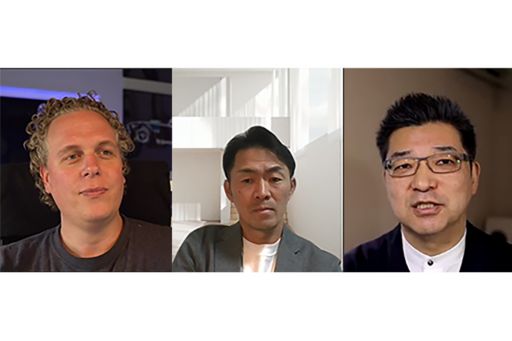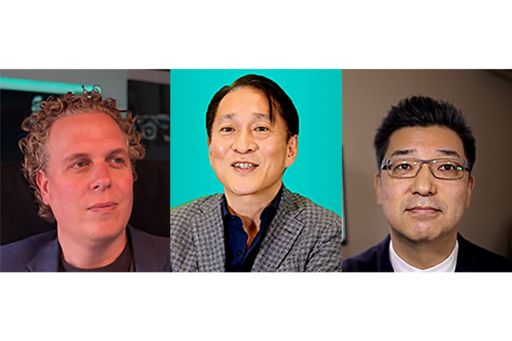Society where Digital Twins Will Become a Reality
〜We Are in a Phase of Discussing “How We Can Make Society Better” by Focusing on the Advantages and Disadvantages of Technology〜
Technologies such as IoT, AI, the cloud and 5G have become part of our lives and are spreading in our society. And now, we are beginning to feel that even the “digital twin,” which replicates real space like a “mirror” by replicating information that exists in real space in digital space, is a realistic future.
In this world where the border between digital and real is unboundedly vague, what kind of issues are we going to confront and where are we going to seek solutions?
In this article, we will introduce the discussions conducted between Masayuki Chatani from KPMG Ignition Tokyo (KIT) and Kazunori Yamauchi, CEO of Polyphony Digital Inc., which created the driving & car life simulator “Gran Turismo.”
Pioneer of Digital Twin, “Gran Turismo”
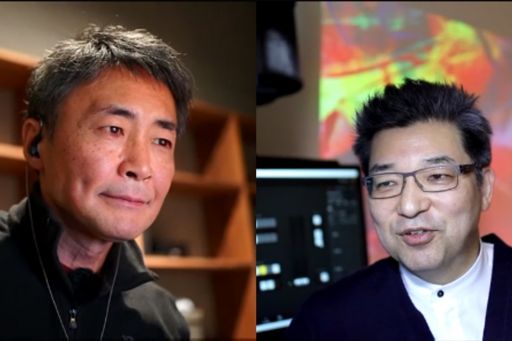
(Kazunori Yamauchi, President of Polyphony Digital Inc. (left) and Masayuki Chatani, Representative Director & CEO of KPMG Ignition Tokyo and CDO of KPMG Japan (right)) *Professional affiliation and official position in the article are at the time of publication.
Chatani: Not long after launching “PlayStation®️1,” everyone at Sony was talking about a rumor that “something amazing is being created at Yamauchi-san’s place.” The idea was dreamlike even from back then, and when I have heard the term “digital twin” recently, I truly feel that “Gran Turismo” was indeed the pioneer of this concept.
Were you aiming to create “a simulator rather than a racing game” from the beginning? Also, what do you think about digital twins, which have been attracting attention in recent years?
Yamauchi: In the first place, I think that many video games used to express physical objects in “not this but some other world” with an engine rather than reproducing the real world as is. For instance, the physical objects of the Mario Bros. are the Mario brothers. However, as cars and racing courses, which we have been dealing with, actually existed in the real world, I guess they ended up becoming one of the examples of digital twins.
Chatani: In this sense, I think you had great foresight. You have now taken one step further to run the “GT Academy (international virtual-to-reality contests launched by three companies—Nissan’s “GT Academy by Nissan x PlayStation®,” PlayStation and Polyphony Digital—in 2008) to develop professional racing drivers by allowing them to train with simulators.
If this GT Academy program is likened to a professional firm like KPMG, it would be like trying to make use of simulation to achieve the process of becoming a professional who assumes huge responsibility by accumulating experiences and enhancing empirical values through actual operations. I think this will have a great impact on education. What was your intention when starting this initiative?
Yamauchi: The GT Academy project was launched in 2008, which was about 10 years after the appearance of the first Gran Turismo in 1997.
Initially in 2008, I had a strong desire to “prove that Gran Turismo is a proper simulator.” This was because, although I felt that Gran Turismo “will positively contribute to the acquisition and enhancement of driving skills” and “can be utilized as a driving simulator of an actual car,” there was a strong feeling in public opinion that “after all, it’s merely a video game.” This is why I wanted to verify my thoughts.
Chatani: As a result, many GT Academy graduates are achieving significant performances in various races. How much training do they go through?
Yamauchi: For instance, the top players from throughout the world who fight their way up in the e-Sport championship called the “FIA Gran Turismo Championship,” which is currently held based on a partnership with the FIA (Federation Internationale de l’Automobile), seem to be driving 4-5 hours every day from when they are 3-4 years old.
In the actual world, only a few hours of driving racing cars or driving at a racing circuit can be secured because real motor sport requires a lot of money. Compared to this, a massive amount of experience and training can be obtained at a low cost.
Chatani: It seems to me that this approach of competing based on volume and experience value reflects the age of data and AI. I guess it’s like finding the best algorithm by populating a lot of data.
By the way, I think that in reality, driving skills that are required for car racing and everyday driving change according to the weather and road conditions. Is it possible to simulate these conditions? For instance, if you set the simulation to a rainy day, will the road surface become slippery?
Yamauchi: Yes, the friction factor (μ) of the road surface changes with various conditions. There is an enormous amount of patterns of driving courses and their conditions, combinations of cars and setups of the car itself, and these are further combined to provide massive options. As it is impossible to experience all these with real cars, it is easier to experience these environments with a simulator.
Chatani: I guess it is an advantage of a simulator that you can try different options that are difficult in the real world.
Yamauchi: Yes, I think so too. In other words, I think that a simulator allows users to comprehensively learn “what a car is,” “how it behaves physically” and “how it interacts with the course, that is, the environment” at an abstracted level rather than enabling them to enhance their experience with specific courses and cars.
Value of “Emotionally Stirring” Sports that Can be Experienced with E-Sports
Chatani: So, how much of the real environment do you think the current Gran Turismo is able to recreate?
Yamauchi: For instance, after 2008 when we launched the GT Academy, we tried to develop the design of a racing car that participates in the 24 Hours of Le Mans using a simulation engine. In the 24 Hours Nurburgring race as well, which I took part in between 2008 and 2016, we created and set up the car on Gran Turismo, drove it on the real circuit and proceeded with the development by taking data.
We have long been carrying out a circular development of taking logs with a data logger, doing a simulation based on these data, and then reflecting this in an actual car and driving around the circuit. Information taken from an enormous number of sensors mounted on the car is fed back to Gran Turismo and utilized in the simulation. This means that it can be implemented with such precision. In other words, the level of our program is high enough to develop a car.
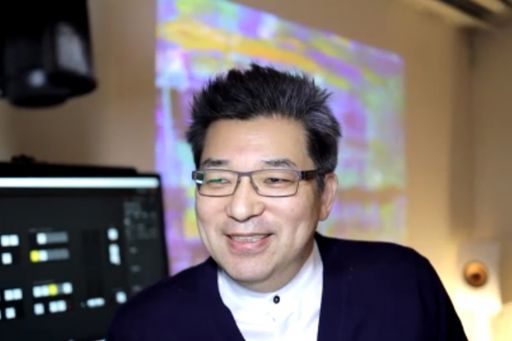
Chatani: That sounds great! It’s like a “digital twin,” where there are almost no boundaries between the game and real life.
In this context, I would very much like to ask you about the “future of e-sports.” In fact, there are many e-sports fans at KPMG who are writing books about e-sports and enjoying themselves by hosting internal competitions. How do you think e-sports will expand going forward?
Yamauchi: To be honest, “I have absolutely no idea” and as there are various types of e-sports, I don’t feel that I am representing any kind of e-sports.
In the first place, it’s not like we created the Gran Turismo SPORT and held a championship by partnering with the FIA because there was an e-sports movement. Nevertheless, what we felt by working on it ourselves is that sport is an efficient “mechanism” to arouse human emotions.
Before holding the championship, we had imagined that it would “stir our emotions” but when we actually experienced it, it was beyond our imagination. Sports tend to appeal to human emotions, whether we practice them ourselves or watch them as spectators, and I realized that whether it is real or virtual, there is absolutely no difference in this arousal of emotion. Also, we were able to really understand what people in the sports industry have been experiencing and what kind of value they have been creating.
Chatani: There are certainly not just racing games but all kinds of games and all of these combined together have created the e-sports industry and are starting to become a boom. Professional e-sports players are beginning to emerge and, in the near future, it will probably become a top occupation that children want to pursue just like being a YouTuber.
What Are the “Barriers” to Self-Driving If Any?

Chatani: An industry that is strongly associated with Gran Turismo, along with e-sports, is the automobile industry. As you well know, self-driving has been a hot topic in recent years. KPMG has also set up the “KPMG Mobility Laboratory” to provide advisory services in this sector. What will happen to the appeal and evolution of car racing when self-driving becomes possible?
Yamauchi: This is going to be a simple answer but unsurprisingly, when automobiles were introduced, people did not stop running (track-and-field events) even though automobiles can run faster than people. Given this, even if AI surpasses human technology and self-driving is launched, I don’t think it will stop people from driving nor damage the value of car racing.
Chatani: You mean, even if racing rules may change?
Yamauchi: It is likely that even if AI is optimized to a level where it can defeat human beings, I feel that the situation will continue for a while yet where human beings can respond to last-minute changes in rules before the game whereas AI will have a hard time doing this.
Chatani: Indeed, AI will probably not be able to respond completely to last-minute changes as it now stands. Meanwhile, there was news at the end of 2020 about an AI shogi player that defeated a human being without reading the game record. What’s amazing about this is that it may become possible for AI to think in a way close to human thinking and “set the goal of the game on its own.” This may have a great impact on the industrial world.
Yamauchi: According to recent studies, if some 100 million images are shown randomly to AI, it will be able to spontaneously segment the world without any tutoring.
In the case of human children, they will be able to understand “the mechanism of the world” and segment it naturally by continuing to experience the world with grownups such as their parents, then go through the “naming” process by connecting their experiences with the words they learn later. It seems that the same thing will occur in the world of AI.
I heard this from Daisuke Okanohara at Preferred Networks, a startup developing AI, and I thought it was very interesting. I don’t know if 100 million images are many or few but considering that it takes about a year for human children to segment the world through experience, it is definitely possible that AI will be able to accomplish this in far less time.
Chatani: I guess it would be difficult to collect that many images. As simpler and fewer names and accounts in a company are considered better, it may be necessary to think of approaches that are difficult to do with deep learning, such as deriving answers from a small amount of data.
Yamauchi: That’s what’s interesting. Humans think that simple is beautiful. They think it is ideal to obtain many productive outputs from simple equations that can be printed on T-shirts. AI is the opposite. I think AI is distinct in that it is data-driven and can generate an enormous amount of equations, that cannot be handled by humans, in an invisible network tier. Although they are both mathematical, AI handles the world of mathematics that could not be handled by humans.
Chatani: With self-driving expanding and beginning to affect different industries, you are one of the members of the selection committee for the Car of the Year. What is your outlook for the future automobile industry and the world after self-driving is implemented.
Yamauchi: As I am involved, for instance, as a member of the selection committee of Japan’s Car of the Year in a traditional automobile culture that has been inherited from the past, I honestly don’t know about the actual front line of self-driving.
However, I still do not have a definite answer to “whether level 5 self-driving can be realized,” though I obviously think it will advance to within an inch of this level in no time...
Chatani: If self-driving is implemented in Japanese society, where we will be facing a super-aging society before other countries, I think it will receive a lot of support from so-called “transportation refugees” and “shopping refugees.” There will be compelling needs from regions outside large urban areas where people live far from facilities necessary for daily life such as supermarkets and hospitals.
If self-driving can be evolved using Gran Turismo’s simulator, I think it would be a great honor for Japan. What is your opinion on this?
Yamauchi: In fact, it seems that the semiconductor giant NVIDIA was using a game simulator like Gran Turismo to teach car driving. However, this was several years ago and I feel that current research on self-driving has passed the stage of “how to drive the car” but has advanced to the race to develop in the level of “how to perceive the world.”
Anyway, I am interested in what kind of approach they are taking now. As semantic recognition from images has already been put to practical use, they can acknowledge “white lines, guardrails and roads.” However, I think it is actually quite difficult to recognize the fact that “the ground surface must always come under the sky.”
For instance, if a car comes across scattered toilet paper on the road, humans will be able to instantly assume that “toilet paper loaded on a truck has fallen off somehow or other,” but AI would not be able to distinguish it from white lines. This would be quite difficult for AI to do.
Chatani: I guess they are not very good at meta estimation. Even if AI can recognize what something is, it is not easy to conclude “why it is there.”
Yamauchi: That’s right. I think this may be a barrier to implementing self-driving systems. Of course, I think it is possible for AI to deliver higher performance than humans in car racing. There are already AI programs that are performing better than humans in time trials, where a single person competes for lap time in a single lap. However, this is not an easy thing to deal with because when it comes to racing, I think various factors come into play and problems arise.
Chatani: It will also be necessary to teach them about race accidents tens of thousands of times.
Yamauchi: Yes. The rest, I guess, is to have AI actually compete with humans online. After a certain level is achieved, AI programs will probably grow stronger through reinforcement learning between themselves.
Will Humans Choose "Real or Digital"?
Chatani: At KPMG, there are professionals such as accountants and consultants who draw out insights and clarify problems by actually visiting client companies, as well as professionals who analyze insights and seek ways to solve problems with technology, like KIT. All these professionals support our clients by separating into front and backyards. I think this structure resembles that of Formula One (F1) teams.
What I would like to ask you now is, “Will the F1 team structure, where the people on the frontline and the data analysis people work together as one team” continue?”
Yamauchi: I have also been to the sites of several F1 teams, including Red Bull, Ferrari, Mercedes and McLaren.

During the race, there are people that are working on the maintenance inside the pits at the circuit. However, as you well know, the number of team members that can go inside the circuit is limited by regulations and so many times more strategists are stationed in the control room of the base/headquarters of the team. In this room, which is connected with the circuit at all times, they estimate the future that may branch off any time based on the GPS coordinates of each car and logs sent in from data loggers every moment during the race and select the scenario with the highest probability of winning the race.
What is interesting here is that the image of the circuit can also be shown with a projector in the control room far away from the field. If we think about it simply, it is not necessary to show the images, as it is sufficient to display data that are abstracted to a certain level and it is easy to analyze them on the displays they have in their hands. Even so, the images of the actual racing site are shown in the room.
Chatani: Is it necessary to get a sense of the actual track or an awareness of it?
Yamauchi: Yes, that’s right! Even though they are strategists, to feel the atmosphere of the track is very important for humans. This may not change going forward.
Chatani: I can understand this need. Recently in Hollywood, I heard that when you open the door of a meeting room, an image of another base is projected on the opposite wall and connected as a “virtual room.” Meetings are held with this staging where the participants can feel as if they are in a common space.
While Teams and Zoom have become quite common, each person is separated with frames on the screen and so it lacks a sense of unity. Maybe this staging was devised because of this.
Profile of Interviewee
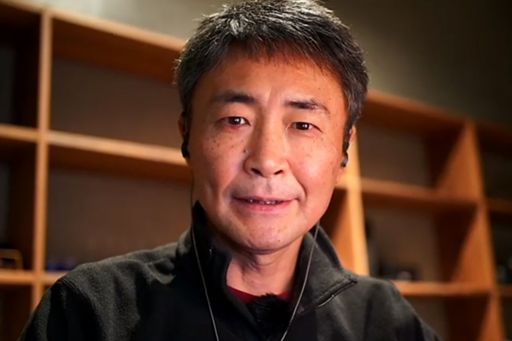
Kazunori Yamauchi
President of Polyphony Digital Inc.
Sony Interactive Entertainment Senior Vice President
Japanese game creator Kazunori Yamauchi is renowned for the Gran Turismo game series that has sold over 80 million units worldwide. Joining Sony Music Entertainment in 1992, he was involved in the startup of the Sony PlayStation. Transferring to Sony Computer Entertainment in 1994, he produced his first game title Motor Toon Grand Prix, and in 1997 the first of the Gran Turismo series which sold approximately 10.85 million units worldwide. Mr. Yamauchi went on to establish Polyphony Digital Inc. in 1998, and serves as its President. He has also served as a board member of the Japan Car of the Year awards since 2001.
Follow us on KPMG Ignition Tokyo LinkedIn for the latest news.
Connect with us
- Find office locations kpmg.findOfficeLocations
- kpmg.emailUs
- Social media @ KPMG kpmg.socialMedia



